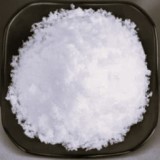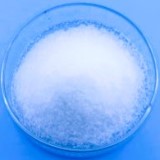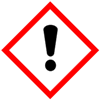 |
Ammonium Alum or Aluminum Ammonium Sulfate Anhydrous Dodecahydrate SDS Safety Data Sheet of Supplier Exporter Manufacturers' Representative |
Email: info@ammol.org |
Call Toll Free +1-855-552-6665 |
Ammonium Alum Anhydrous Dodecahydrate Aluminum Ammonium Sulfate
CAS Number: Ammonium Alum Anhydrous 7784-25-0 or Ammonium Alum Dodecahydrate 7784-26-1
Molecular Formula: AlNH4(SO4)2-12H2O Anhydrous or AlNH4(SO4)2 Dodecahydrate
Molecular Weight: 237.15 Ammonium Alum Anhydrous 7784-25-0 or 453.33 Ammonium Alum Dodecahydrate


Ammonium Alum Anhydrous Dodecahydrate or Aluminum Ammonium Sulfate
Ammonium Alum, Aluminum Ammonium Sulfate, Aluminium Ammonium Sulphate SDS, Safety Data Sheet
MSDS Sheet, Material Safety Data Sheet 130-Jan-25
1. Product Identification
Product Name & Other Names: Ammonium Alum or Aluminum Ammonium Sulfate or Aluminium Ammonium Sulphate or Aluminum ammonium disulfate dodecahydrate or Aluminum ammonium disulfate, 12-hydrate or sulfuric acid aluminum ammonium salt (2:1:1), dodecahydrate.
CAS No.: 7784-25-0 (Anhydrous) 7784-26-1 (Dodecahydrate)
EINECS EC Number: 232-0555-3
Relevant uses and uses advised against (if any) : Industrial Manufacturing.
Suppliers: As per letterhead.
2. Hazards Identification
GHS, Globally Harmonized System Classification in accordance with 29 CFR 1910
Classification according to Regulation (EC) No 1272/2008
Skin corrosion/irritation Category 2, H315
Serious eye damage/eye irritation Category 2A, H319
Specific target organ toxicity, single exposure; Respiratory tract irritation Category 3, H335
Labelling according to GHS and Regulation (EC) No 1272/2008
GHS Label Elements  Irritant |
Signal Words: Warning
Hazard statements:
H315: Causes skin irritation.
H319: Causes serious eye irritation.
H335: May cause respiratory irritation.
Precautionary statements:
P264: Wash skin thoroughly after handling.
P280: Wear protective gloves/protective clothing/eye protection/face protection.
P332+313: If skin irritation occurs: Get medical advice/attention.
P302+P352: IF ON SKIN: Wash with plenty of soap and water.
P305+P351+P338: IF IN EYES: Rinse cautiously with water for several minutes. Remove contact lenses, if present and easy to do. Continue rinsing.
P337+P313 If eye irritation persists: Get medical advice/ attention.
3. Composition/Information on Ingredients
Product Name & Other Names: Ammonium Alum or Aluminum Ammonium Sulfate or Aluminium Ammonium Sulphate or Aluminum ammonium disulfate dodecahydrate or Aluminum ammonium disulfate, 12-hydrate or sulfuric acid aluminum ammonium salt (2:1:1), dodecahydrate.
CAS No.: 7784-25-0 (Anhydrous) 7784-26-1 (Dodecahydrate)
EINECS EC Number: 232-0555-3
4. First Aid Measures
Inhalation: If inhaled, remove to fresh air. If not breathing, give artificial respiration. If breathing is difficult, give oxygen. Get medical attention.
Ingestion: If swallowed, DO NOT INDUCE VOMITING. Give large quantities of water. Never give anything by mouth to an unconscious person. Get medical attention immediately.
Skin Contact: Wipe off excess material from skin then immediately flush skin with plenty of water for at least 15 minutes. Remove contaminated clothing and shoes. Get medical attention. Wash clothing before reuse. Thoroughly clean shoes before reuse.
Eye Contact: Check for and remove any contact lenses. In case of contact, immediately flush eyes with plenty of water for at least 15 minutes. Cold water may be used. WARM water MUST be used. Get medical attention.
5. Fire Fighting Measures
Flammability of the Product: Non-flammable.
Fire Extinguishing Media: Water spray, dry chemical, alcohol foam, or carbon dioxide.
Special Information: In the event of a fire, wear full protective clothing and NIOSH-approved self-contained breathing apparatus with full face piece operated in the pressure demand or other positive pressure mode.
6. Accidental Release Measures
Personal precautions, protective equipment, and emergency procedures: Ventilate area of leak or spill. Avoid breathing dust/fumes/gas/mist/vapors/spray. Use individual protective equipment (waterproof boots, suitable protective clothing, safety glasses, etc.).
Environmental precautions: Do not let the product enter drains, soil, or water sources.
Methods and materials used for containment Cleanup procedures and Storage: Contain spilled material. Cover with an inert, non-combustible absorbent material, (e.g. sand, earth, diatomaceous earth, vermiculite). Vacuum or sweep-up and remove to an approved disposal container. Cover spill with soda ash and mix.
7. Handling and Storage
Precautions for safe handling: Apply according to good manufacturing and industrial hygiene practices. Ensure proper ventilation. In case of insufficient ventilation, wear suitable respiratory equipment. Wash thoroughly after handling. Do not drink, eat, or smoke while handling. Avoid contact with skin, eyes, and clothing. Minimize dust generation. Avoid breathing dust/fumes/gas/mist/vapors/spray. Keep container tightly closed. Avoid ingestion and inhalation. Use individual protective equipment (waterproof boots, suitable protective clothing, safety glasses, etc.).
Conditions for safe storage, including any incompatibilities: Store in cool, dry, and ventilated area away from heat sources and protected from sunlight in tightly closed original container. Keep air contact to a minimum. Store protected from heat, sparks and ignition sources and incompatible materials. Avoid inhalation of dust/mist/vapor. Do not store with incompatible materials like strong oxidizing agents and alkalis.
8. Exposure Controls/Personal Protection
Airborne Exposure Limits:
-OSHA Permissible Exposure Limit (PEL):
(Vacated) TWA: 2 mg/m3
Ventilation System: A system of local and/or general exhaust is recommended to keep employee exposures low.
Personal Respirators (NIOSH Approved): If the exposure limit of Aluminum Ammonium Sulfate or Ammonium Alum is exceeded, a half-face dust/mist respirator may be worn for up to ten times the exposure limit or the maximum use concentration specified by the appropriate regulatory agency or respirator supplier, whichever is lowest.
Skin Protection: Wear impervious protective clothing, including boots, gloves, lab coat, apron or coveralls, as appropriate, to prevent skin contact.
Eye Protection: Use chemical safety goggles and/or full face shield where dusting or splashing of solutions is possible. Maintain eye wash fountain and quick-drench facilities in work area.
Other Control Measures: Maintain good housekeeping in work area. Handle in accordance with good industrial hygiene and safety practice.
9. Physical and Chemical Properties
Appearance: Colorless crystals or powder.
Odor: Odorless.
Odor threshold: Not applicable.
pH: 4.6 (0.05M solution)
Relative density: around 1.65
Boiling Point: 280C (536F) Decomposes.
Melting Point: 94.5C (201F)
Flash point: No information available.
Auto-ignition temperature: No information available.
Decomposition temperature: No information available.
Upper/lower flammability or explosive limits: No information available.
Vapor pressure: No information available.
Vapor density: No information available.
Evaporation rate: No information available.
Flammability (solid, gas): No information available.
Partition coefficient: No information available.
Solubility: 14% in water, 200% in boiling water
Viscosity: No information available.
10. Stability and Reactivity
Stability: Stable under ordinary conditions of use and storage.
Hazardous Decomposition Products: Toxic oxides of nitrogen, sulfur dioxide, ammonia, and sulfur trioxide may form at elevated temperatures. Hydrolyzes to form sulfuric acid.
Hazardous Polymerization: Will not occur.
Incompatibilities: Strong oxidizing agents. Contact with alkalis may release ammonia gas. Corrosive to metals in the presence of water.
Conditions to Avoid: Moisture heat and incompatibles.
11. Toxicological Information
ORL-RAT LD50: 10.8 g/kg.
Carcinogenic Effects: Not a reported carcinogen by IARC, NTP, ACGIH, OSHA.
Mutagenic Effects: No information available.
Teratogenic Effects: No information available.
Developmental Toxicity: No information available.
Reproductive Effects: No information available.
12. Ecological Information
Environmental Toxicity: No information found.
Persistence and Degradability: Soluble in water Persistence is unlikely.
Mobility: Likely to be mobile due to water solubility.
Bioaccumulation/ Accumulation: No information available.
Results of PBT and vPvB assessment: No information available for assessment.
13. Disposal Considerations
Whatever cannot be saved for recovery or recycling should be managed in an appropriate and approved waste disposal facility. Follow all the pollution control rules.
14. Transport Information
DOT USA, TDG Canada & ADR/RID Europe: Not dangerous goods.
IATA/ICAO: Not dangerous goods.
IMDG/IMO: Not dangerous goods.
15. Regulatory Information
USA:
SARA 311/312: See section 2.
16. Other Information
DISCLAIMER: The information and recommendations set forth herein are presented in good faith and believed correct as of the date hereof. It is compiled from various sources and it is not necessarily all inclusive nor fully adequate in every circumstance. In addition, these suggestions should not be confused with nor followed in violation of applicable laws, regulations, rules or insurance requirements applicable. This SDS sheet is intended only as a guide to the appropriate precautionary handling of the material by a properly trained person using this product. Individuals receiving the information must exercise their independent judgment in determining its appropriateness for a particular purpose.
Please visit Main Page of Ammonium Alum Anhydrous Dodecahydrate Aluminum Ammonium Sulfate Suppliers.
American Molecules, also known as ammol.org is a distributor, supplier and manufacturers' representative of all types of Pharmaceuticals, Functional Ingredients, Excipients and Specialty Chemicals in Texas USA. Our principals manufacture supply and export USP NF BP, Ph Eur, etc grades of chemicals pure and reagent grade, mineral fortifiers, FCC food grade. Tailor made particle size and customized specifications are offered. The principal's facility is having one or more of the certifications like FDA approval and GLP, cGMP, ISO9001, ISO14001, ISO/IEC 17025, ISO22000, FSSC 22000, ISO45001, FSSAI, Kosher, HALAL, COPP, WHO-GMP certified and Written Confirmation (WC) for export to Europe is available. The manufacturers suppliers and exporters observe WHO Good Manufacturing Practices and Good Laboratory Practices.





Suppliers and Manufacturers' Representative:

9910 Bent Oak Dr
Houston, TX 77040, USA
Call Toll Free: 1-855-55-AMMOL 1-855-552-6665
Email: info@ammol.org